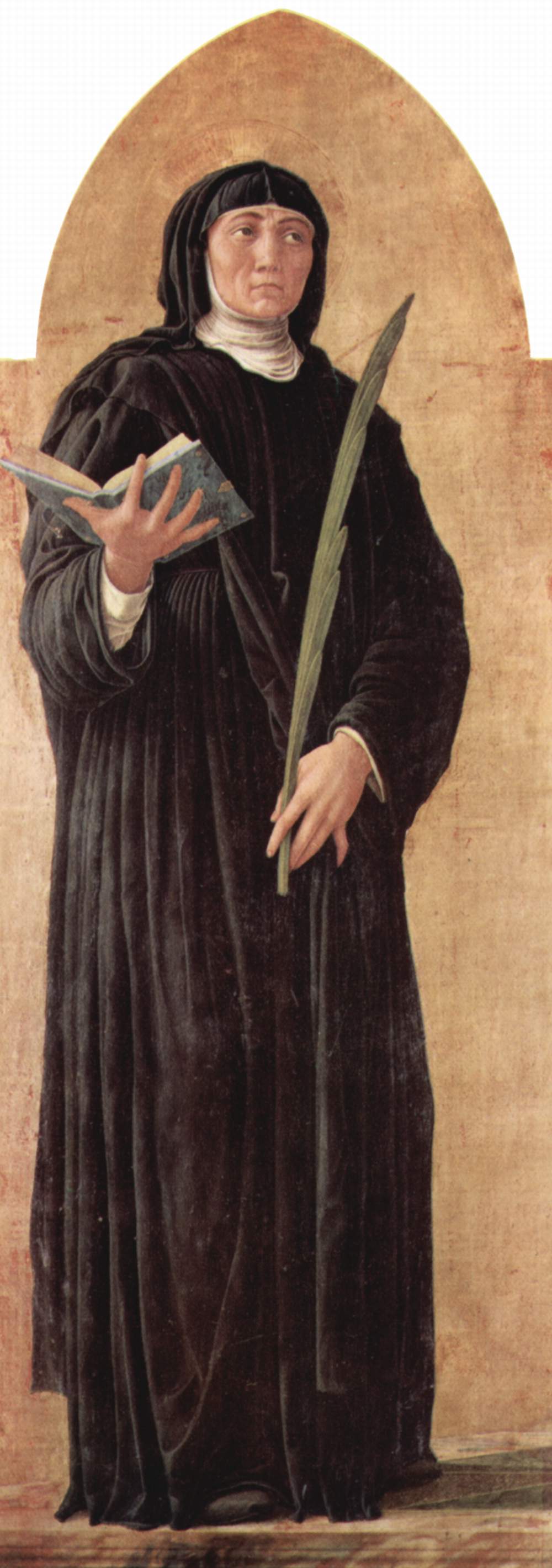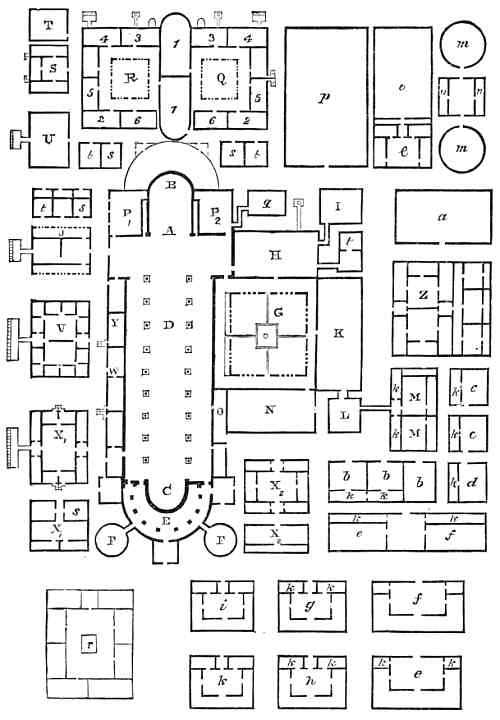|
Nun
A nun is a woman who vows to dedicate her life to religious service and contemplation, typically living under vows of poverty, chastity, and obedience in the enclosure of a monastery or convent.''The Oxford English Dictionary'', vol. X, page 599. The term is often used interchangeably with religious sisters who do take simple vows but live an active vocation of prayer and charitable work. In Christianity, nuns are found in the Catholic, Oriental Orthodox, Eastern Orthodox, Lutheran, and Anglican and some Presbyterian traditions, as well as other Christian denominations. In the Buddhist tradition, female monastics are known as Bhikkhuni, and take several additional vows compared to male monastics (bhikkhus). Nuns are most common in Mahayana Buddhism, but have more recently become more prevalent in other traditions. Christianity Catholicism In the Catholic tradition, there are many religious institutes of nuns and sisters (the female equivalent of male monks or fri ... [...More Info...] [...Related Items...] OR: [Wikipedia] [Google] [Baidu] |
Bhikkhunī
A bhikkhunī (, ) is a fully ordained Buddhist nun. Bhikkhunīs live by the Vinaya, a set of either 311 Theravada, 348 Dharmaguptaka, or 364 Mulasarvastivada school rules. Until recently, the lineages of female monastics only remained in Mahayana Buddhism and thus were prevalent in countries such as Buddhism in China, China, Korean Buddhism, Korea, Buddhism in Taiwan, Taiwan, Buddhism in Japan, Japan, and Buddhism in Vietnam, Vietnam, while a few women have taken the full monastic vows in the Theravada and Vajrayana schools. The official lineage of Tibetan Buddhism, Tibetan Buddhist bhikkhunīs recommenced on 23 June 2022 in Bhutan when 144 nuns, most of them Bhutanese, were fully ordained.DAMCHÖ DIANA FINNEGAN and CAROLA ROLOFF (BHIKṢUṆĪ JAMPA TSEDROEN). "Women Receive Full Ordination in Bhutan For First Time in Modern History", ''Lion's Roar'', JUNE 27, 2022. According to the Buddhist Canon, women are as capable of reaching Enlightenment in Buddhism, enlightenment as me ... [...More Info...] [...Related Items...] OR: [Wikipedia] [Google] [Baidu] |
Religious Sister (Catholic)
A religious sister (abbreviated: Sr.) in the Catholic Church is a woman who has taken public vows in a religious institute dedicated to apostolic works, as distinguished from a nun who lives a cloistered monastic life dedicated to prayer and labor, or a canoness regular, who provides a service to the world, either teaching or nursing, within the confines of the monastery. Nuns, religious sisters and canonesses all use the term "Sister" as a form of address. The ''HarperCollins Encyclopedia of Catholicism'' (1995) defines "congregations of sisters s institutes of women who profess the simple vows of poverty, chastity, and obedience, live a common life, and are engaged in ministering to the needs of society." As William Saunders writes: "When bound by simple vows, a woman is a sister, not a nun, and thereby called 'sister'. Nuns recite the Liturgy of the Hours or Divine Office in common .. ndlive a contemplative, cloistered life in a monastery ..behind the 'papal enclosure'. Nu ... [...More Info...] [...Related Items...] OR: [Wikipedia] [Google] [Baidu] |
Eight Garudhammas
The controversial Eight Garudhammas (Sanskrit: ,Here or is used as an adjective, the wikilink points to the associated sanskrit noun. See The Pali Text Society's Pali-English dictionary entry for translated as 'rules of respect', 'principles of respect', 'principles to be respected') were considered additional precepts required of bhikkhunis (fully ordained Buddhist nuns) above and beyond the monastic rule () that applied to monks. They are controversial because they attempt to prescribe an inferior role for nuns, and bhikkhunis have revealed scholarly evidence that the Eight Garudhammas are not found in the historical teachings of Gautama Buddha. literally means 'heavy' and when applied to , it means "heavy offense that entails penance () consisting of 2 weeks" as described in rule No. 5. The authenticity of these rules is contested; they were supposedly added to the (bhikkhunis) "to allow more acceptance" of a monastic order for women, during the Buddha's time Narrative ... [...More Info...] [...Related Items...] OR: [Wikipedia] [Google] [Baidu] |
Enclosed Religious Orders
Enclosed religious orders are religious orders whose members strictly separate themselves from the affairs of the external world. The term '' cloistered'' is synonymous with ''enclosed''. In the Catholic Church, enclosure is regulated by the code of canon law, either the 1983 Code of Canon Law, Latin code or the Code of Canons of the Eastern Churches, Oriental code, and also by the constitutions of the specific order.The Code of Canon Law, Canon 667 ff. English translation copyright 1983 The Canon Law Society Trust It is practised with a variety of customs according to the nature and charism of the community in question. This separation may involve physical barriers such as walls and grilles (that is, a literal cloister), with entry restricted for other people and certain areas exclusively permitted to the members of the convent. Outsiders may only temporarily enter this area under certain conditions (for example, if they are candidates for the order, doctors or craftsmen). The ... [...More Info...] [...Related Items...] OR: [Wikipedia] [Google] [Baidu] |
Monastery
A monastery is a building or complex of buildings comprising the domestic quarters and workplaces of Monasticism, monastics, monks or nuns, whether living in Cenobitic monasticism, communities or alone (hermits). A monastery generally includes a place reserved for prayer which may be a chapel, Church (building), church, or temple, and may also serve as an Oratory (worship), oratory, or in the case of Cenobium, communities anything from a single building housing only one senior and two or three junior monks or nuns, to vast complexes and estates housing tens or hundreds. A monastery complex typically comprises a number of buildings which include a church, dormitory, cloister, refectory, library, Wiktionary:balneary, balneary and Hospital, infirmary and outlying Monastic grange, granges. Depending on the location, the monastic order and the occupation of its inhabitants, the complex may also include a wide range of buildings that facilitate self-sufficiency and service to the commun ... [...More Info...] [...Related Items...] OR: [Wikipedia] [Google] [Baidu] |
Convent
A convent is an enclosed community of monks, nuns, friars or religious sisters. Alternatively, ''convent'' means the building used by the community. The term is particularly used in the Catholic Church, Lutheran churches, and the Anglican Communion. Etymology and usage The term ''convent'' derives via Old French from Latin ''conventus'', perfect participle of the verb ''convenio'', meaning "to convene, to come together". It was first used in this sense when the eremitical life began to be combined with the cenobitical. The original reference was to the gathering of mendicants who spent much of their time travelling. Technically, a monastery is a secluded community of monastics, whereas a friary or convent is a community of mendicants (which, by contrast, might be located in a city), and a canonry is a community of canons regular. The terms abbey and priory can be applied to both monasteries and canonries; an abbey is headed by an abbot, and a priory is a lesser depend ... [...More Info...] [...Related Items...] OR: [Wikipedia] [Google] [Baidu] |
Anglicanism
Anglicanism, also known as Episcopalianism in some countries, is a Western Christianity, Western Christian tradition which developed from the practices, liturgy, and identity of the Church of England following the English Reformation, in the context of the Protestant Reformation in Europe. It is one of the largest branches of Christianity, with around 110 million adherents worldwide . Most are members of national or regional Ecclesiastical province#Anglican Communion, ecclesiastical provinces of the international Anglican Communion, one of the largest Christian bodies in the world, and the world's third-largest Christian communion. When united and uniting churches, united churches in the Anglican Communion and the breakaway Continuing Anglican movement were not counted, there were an estimated 97.4 million Anglicans worldwide in 2020. Adherents of Anglicanism are called ''Anglicans''; they are also called ''Episcopalians'' in some countries. The provinces within the Anglican ... [...More Info...] [...Related Items...] OR: [Wikipedia] [Google] [Baidu] |
Evangelical Counsels
In Christianity, the three evangelical counsels, or counsels of perfection, are chastity, poverty (or perfect charity), and obedience. As stated by Jesus in the canonical gospels, they are counsels for those who desire to become "perfect" (, ). The Catholic Church interprets this to mean that they are not binding upon all, and hence not necessary conditions to attain eternal life (heaven), but that they are " acts of supererogation", "over and above" the minimum stipulated in the biblical commandments. Catholics who have made a public profession to order their lives by the evangelical counsels, and confirmed this by public vows before their competent church authority (the act of religious commitment known as a profession), are recognised as members of the consecrated life. Consecrated life There are early forms of religious vows in the monastic traditions. The Rule of Saint Benedict (ch. 58.17) indicates that the newly received promise stability, fidelity to monastic lif ... [...More Info...] [...Related Items...] OR: [Wikipedia] [Google] [Baidu] |
Liturgy Of The Hours
The Liturgy of the Hours (), Divine Office (), or ''Opus Dei'' ("Work of God") are a set of Catholic prayers comprising the canonical hours, often also referred to as the breviary, of the Latin Church. The Liturgy of the Hours forms the official set of prayers "marking the hours of each day and sanctifying the day with prayer." The term "Liturgy of the Hours" has been retroactively applied to the practices of saying the canonical hours in both the Christian East and West–particularly within the Latin liturgical rites–prior to the Second Vatican Council, and is the official term for the canonical hours promulgated for usage by the Latin Church in 1971. Before 1971, the official form for the Latin Church was the '' Breviarium Romanum'', first published in 1568 with major editions through 1962. The Liturgy of the Hours, like many other forms of the canonical hours, consists primarily of psalms supplemented by hymns, readings, and other prayers and antiphons prayed at fixe ... [...More Info...] [...Related Items...] OR: [Wikipedia] [Google] [Baidu] |
Catholic
The Catholic Church (), also known as the Roman Catholic Church, is the List of Christian denominations by number of members, largest Christian church, with 1.27 to 1.41 billion baptized Catholics Catholic Church by country, worldwide as of 2025. It is among the world's oldest and largest international institutions and has played a prominent role in the history and development of Western civilization.Gerald O'Collins, O'Collins, p. v (preface). The church consists of 24 Catholic particular churches and liturgical rites#Churches, ''sui iuris'' (autonomous) churches, including the Latin Church and 23 Eastern Catholic Churches, which comprise almost 3,500 dioceses and Eparchy, eparchies List of Catholic dioceses (structured view), around the world, each overseen by one or more Bishops in the Catholic Church, bishops. The pope, who is the bishop of Rome, is the Papal supremacy, chief pastor of the church. The core beliefs of Catholicism are found in the Nicene Creed. The ... [...More Info...] [...Related Items...] OR: [Wikipedia] [Google] [Baidu] |





